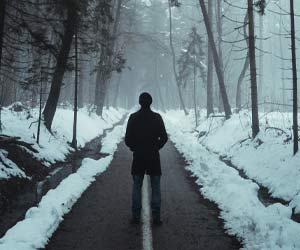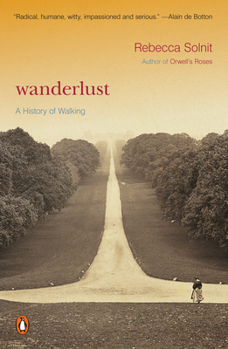Wanderlust: A History of Walking
Select Format
Select Condition 
Book Overview
A passionate, thought-provoking exploration of walking as a political and cultural activity, from the author of Orwell's Roses Drawing together many histories--of anatomical evolution and city design, of treadmills and labyrinths, of walking clubs and sexual mores--Rebecca Solnit creates a fascinating portrait of the range of possibilities presented by walking. Arguing that the history of walking includes walking for pleasure...
Related Subjects
Anatomy Biological Sciences Children's Books Consciousness & Thought Education & Reference Excursion Guides Hiking & Camping History History of Sports Humanities Individual Sports Literary Literature Literature & Fiction Miscellaneous Philosophy Politics & Social Sciences Reference Running & Jogging Self Help Self-Help Self-Help & Psychology Spiritual Sports & Outdoors Sports & RecreationCustomer Reviews
A personal and erudite survey of three centuries of walking
An excursion into fascinating territory
Pilgrimage is a liminal state
Guide book to the restless
Really Enjoyed Solnit's Perspective
Wanderlust: A History of Walking Mentions in Our Blog

What is Fixation Friday? In this new blog series, we'll spotlight a trending topic to explore. This week, it's Outdoor Adventures. If this is something you're excited about, read on as we follow the paths (and trails) this theme leads us down.

Our current circumstances have a lot of people talking about the Nordic tradition known as friluftsliv (pronounced free-loofts-liv). Translated as open air life, it is the idea of spending as much time outdoors as possible, no matter the weather. So get on out there!





